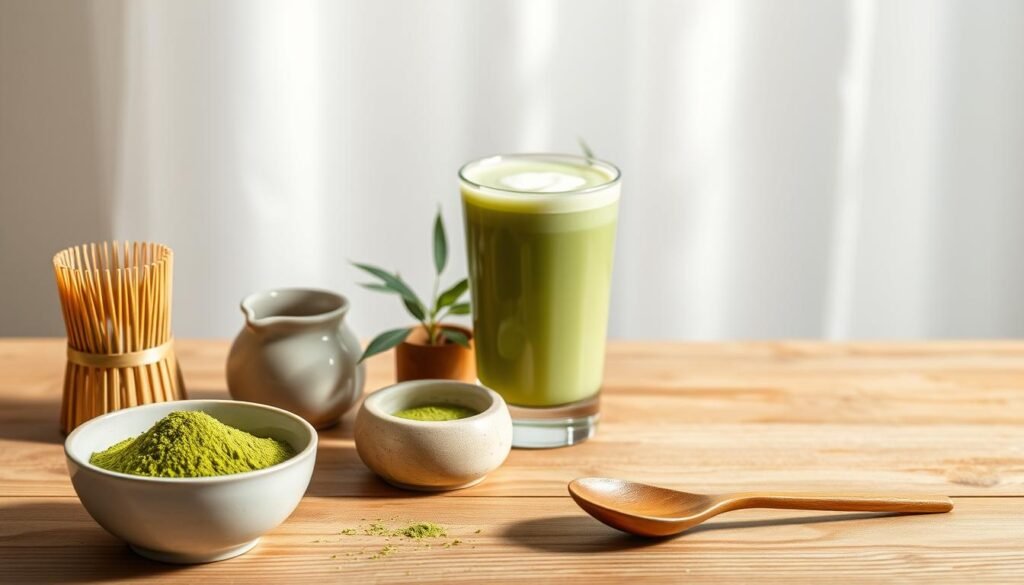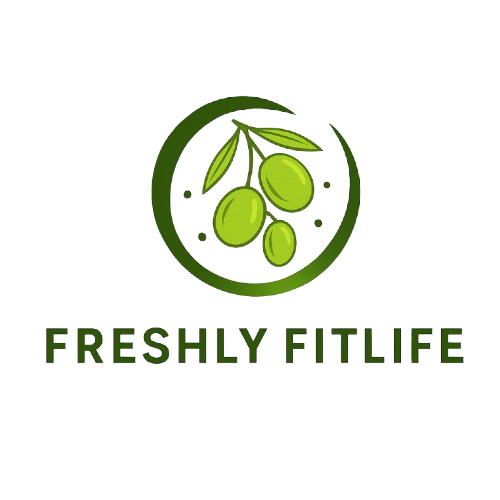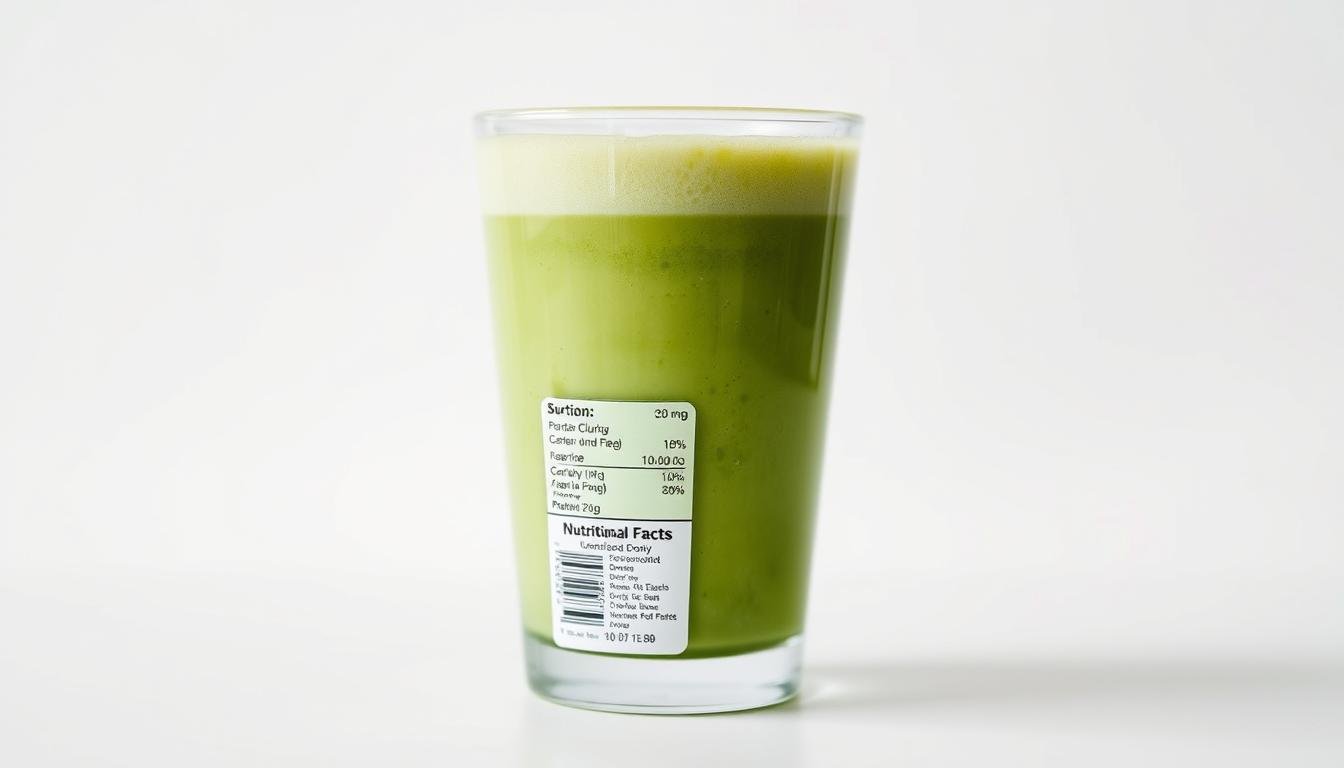Could your favorite matcha latte be hiding a sugary secret? As this vibrant green drink sweeps across coffee shops, many wonder: does its health hype hold up? Let’s unpack the truth behind the trendy beverage.
Matcha lattes have become a staple in the U.S., praised for their earthy flavor and energy-boosting perks. Unlike regular green tea, matcha packs concentrated antioxidants like EGCG, which may support metabolism and focus. But when chain cafes like Dunkin’ or Starbucks step in, sugar and calories often sneak into the mix.
This article dives into the nutritional details of popular matcha drinks. We’ll compare Dunkin’s version to Starbucks’ offerings and homemade recipes. You’ll learn how caffeine levels stack up, why added sugars matter, and whether premium ingredients justify the cost. Spoiler: not all lattes are created equal!
Ready to sip smarter? Let’s explore what’s really in your cup.
Key Takeaways
- Matcha contains antioxidants like EGCG, linked to potential health perks.
- Chain café lattes often add high sugar levels, impacting calorie counts.
- Dunkin’ and Starbucks use different recipes, affecting nutrition profiles.
- Homemade versions allow control over sweetness and ingredient quality.
- Caffeine content varies; matcha offers a gentler boost than coffee.
Introduction to Matcha Lattes and Health Considerations
Bright green powders meet frothy milk in a modern twist on tradition. Originating from Japanese tea ceremonies, matcha lattes blend finely ground green leaves with steamed milk. Their rise in U.S. cafes reflects growing interest in functional beverages that promise both flavor and wellness perks.

From Ceremony to Coffee Shop
Chain giants like Starbucks and Dunkin’ transformed this ceremonial drink into grab-and-go options. While traditional versions use minimal ingredients, commercial recipes often add sweeteners. A medium-sized café latte can pack 25+ grams of sugar—more than a glazed doughnut.
Why Beverage Choices Matter Now
Consumers increasingly seek drinks aligning with active lifestyles. The “starbucks dunkin” rivalry drives innovation but also sugar-loaded variations. This sparks debate: can pre-made lattes deliver antioxidants without compromising nutritional goals?
| Feature | Traditional Matcha Latte | Chain Café Version |
|---|---|---|
| Base Ingredients | Stone-ground tea, hot water | Premixed powder, milk, sweeteners |
| Avg. Sugar (16oz) | 0g | 24-32g |
| Antioxidant Retention | High | Varies by preparation |
Upcoming sections dissect caffeine levels, cost comparisons, and DIY recipes. You’ll discover how to enjoy earthy flavors without the sugar crash—whether you’re team #Starbucks or prefer homemade brews.
Understanding Matcha and Its Nutritional Benefits
Vibrant green powder meets modern wellness trends. Unlike steeped green tea leaves, matcha involves consuming the entire leaf in powdered form. This process preserves up to 15 times more antioxidants than standard brewed varieties.

Antioxidants and Nutrient Profile
A single teaspoon of ceremonial-grade powder delivers 137x more cancer-fighting catechins than regular green tea. The star compound—EGCG—makes up 60% of these antioxidants. Research suggests it may boost metabolism by 4% during moderate activity.
Key nutrients per 1-gram serving:
| Nutrient | Amount | Daily Value % |
|---|---|---|
| Fiber | 0.3g | 1% |
| Vitamin C | 1.75mg | 3% |
| Potassium | 27mg | 0.5% |
Calm Energy Boost with L-theanine
Matcha’s secret weapon? An amino acid called L-theanine. It teams up with caffeine to create alertness without coffee’s jittery side effects. Studies show this combo improves reaction times by 10% compared to regular caffeinated drinks.
Here’s how traditional matcha stacks up against common alternatives:
| Feature | Matcha | Brewed Green Tea |
|---|---|---|
| Antioxidants | High | Moderate |
| L-theanine per cup | 20-40mg | 5-10mg |
| Caffeine release | 4-6 hours | 1-3 hours |
These properties make the powdered tea a favorite among athletes and professionals seeking sustained focus. Later sections will explore how café versions measure up to these natural advantages.
Exploring Starbucks Matcha Latte: Ingredients and Nutrition
Behind Starbucks’ iconic green logo lies a beverage that’s sparked both devotion and debate. Their matcha latte combines pre-sweetened powder with steamed milk, creating a creamy texture that’s instantly recognizable. Let’s peek under the lid to see what’s really swirling in that cup.

Nutritional Profile and Sugar Content
A 16-ounce Starbucks matcha latte delivers 240 calories and 32 grams of sugar—equivalent to eight sugar packets. The blend starts with a sweetened matcha powder containing Japanese green tea and sugar. Baristas mix this with 2% milk by default, though almond or oat milk substitutions alter nutrition slightly.
Three key factors set this apart from traditional preparations:
- Pre-sweetened base: Powder accounts for 80% of the drink’s sugar
- Milk volume: Steamed dairy adds natural sugars and proteins
- Grade differences: Café-grade powder lacks ceremonial matcha’s vibrant color and antioxidant density
While Starbucks allows customization—like reducing syrup pumps—the core powder remains sweetened. Opting for “less sweetness” simply cuts added syrup, not the powder’s inherent sugar. For context, 32 grams exceeds the American Heart Association’s daily added sugar limit for women (25g) in one drink.
| Feature | Starbucks Matcha | Ceremonial Grade |
|---|---|---|
| Primary Use | Mass production | Traditional tea ceremonies |
| Sugar Content | Pre-blended | None added |
| Leaf Quality | Blended harvests | First-flush leaves |
This doesn’t make the latte “bad”—it just shifts priorities. Those seeking antioxidants might prefer homemade versions, while convenience-seekers appreciate the consistent café experience.
Analyzing Dunkin’ Donuts Matcha Latte – Is Dunkin Matcha Healthy?
Dunkin’s matcha latte arrives in a cheerful cup, but its nutritional story might dim the sparkle. With 250 calories and 28-33 grams of sugar per medium serving, this drink packs more sweetness than a Snickers bar. Let’s crack open the ingredients list to answer: does convenience outweigh health costs?
- Pre-mixed powder: Contains sugar as the second ingredient
- Standardized recipes: Baristas blend powder with whole or plant-based milk
- Lower-grade leaves: Uses food-grade instead of ceremonial matcha
Sweetness Showdown: Chain Café Comparisons
Dunkin’s latte delivers nearly identical sugar levels to Starbucks’ version—both exceed the American Heart Association’s 25g daily limit for women. Homemade recipes, however, average just 5g when using unsweetened milk and pure matcha.
| Drink (16oz) | Calories | Sugar (g) |
|---|---|---|
| Dunkin’ Matcha Latte | 250 | 28-33 |
| Starbucks Matcha Latte | 240 | 32 |
| Homemade Version | 120 | 3-5 |
Lower-quality powder means fewer antioxidants compared to traditional preparations. While you’ll still get an energy boost from caffeine (about 80mg per serving), added sugars may lead to mid-day crashes.
Here’s the takeaway: Dunkin’s matcha latte works as an occasional treat but shouldn’t replace nutrient-dense food choices. Craving that earthy flavor daily? Stay tuned for DIY hacks in the next section.
Homemade Matcha Latte: Benefits and Customization Options
Whisking up your own matcha latte transforms your kitchen into a wellness hub. By using ceremonial-grade powder, you unlock 3x more antioxidants than café versions. This approach lets you skip unwanted sugars while keeping the earthy flavor you love.
Control Over Ingredients and Sweetener Choices
You decide whether almond milk replaces dairy or if honey substitutes refined sugar. Premium powders blend smoothly with hot water, creating a vibrant base without bitter notes. One teaspoon packs more catechins than three cups of regular green tea.
Tailoring Recipes for Dietary Needs
Dietary restrictions? No problem. Coconut milk adds creaminess for lactose-free lattes, while stevia offers zero-calorie sweetness. A typical homemade matcha latte stays under 5g sugar—90% less than chain alternatives.
Crafting your blend takes two minutes but delivers all-day focus. Want to explore healthier matcha latte options? Check out our detailed comparison of popular brands and DIY methods. Your perfect cup awaits—no barista skills required.
Cost Comparison: Savings With Homemade Versus Chain Options
Your daily matcha habit could fund a tropical vacation—or drain your wallet. Chain lattes cost more than premium ingredients for making matcha latte at home. Let’s crunch numbers to reveal smarter sipping strategies.
Breaking Down the Price Tag
A medium matcha latte averages $5.32 at major chains—$5.25 at Starbucks, $5.39 at Dunkin’. Homemade versions slash prices to ~$3.50 per cup using quality components. The secret? Bulk purchases and reusable tools.
| Cost Factor | Chain Latte | DIY Version |
|---|---|---|
| Base Powder | Included | $1.75/serving |
| Milk (12oz) | Included | $0.50 |
| Sweetener | Included | $0.25 |
| Total | $5.32 | $2.50 |
Buying ceremonial-grade powder in bulk cuts costs further. A $25 tin makes 15 lattes—$1.66 per drink. Add milk and hot water, and you’re sipping for under $2.25. Chains mark up ingredients 300% for convenience.
Year-Round Rewards Add Up
Five homemade lattes weekly save $14.10 vs café buys. That’s $733 annually—enough for flights to Hawaii. Beyond cash, you gain:
- No hidden sugars
- Customizable milk choices
- Zero disposable cups
One-time investments like bamboo whisks ($12) pay off in three drinks. Your kitchen becomes a latte home base that fuels both energy and savings accounts. Why pay premium prices for sweetened powders when pure flavor costs less?
Health Implications: Sugar Intake and Energy Benefits
Your morning latte might be a double-edged sword for wellness goals. Chain café versions often contain more sweeteners than a candy bar, while pure matcha offers sustained vitality. Let’s unpack how sugar overloads and smart swaps impact your body.
Sweet Danger in Disguise
The American Heart Association recommends ≤25g daily added sugar for women and ≤36g for men. A medium Dunkin’ or Starbucks matcha latte delivers 28-32g—exceeding women’s limits in one drink. Regular intake hikes risks for:
- Weight gain (sugar converts to fat when unused)
- Type 2 diabetes (insulin resistance spikes)
- Heart disease (linked to chronic inflammation)
Steady Energy Without the Crash
Unlike coffee’s jittery 2-hour rush, matcha blends caffeine with L-theanine for 4-6 hours of calm focus. This amino acid slows caffeine absorption, preventing energy rollercoasters. Studies show better cognitive performance compared to sugary alternatives.
| Energy Source | Peak Duration | Crash Risk |
|---|---|---|
| Sugary Latte | 30-60 mins | High |
| Black Coffee | 2-3 hours | Moderate |
| Pure Matcha | 4-6 hours | Low |
To enjoy benefits without drawbacks:
- Request “less sweet” versions at cafés
- Swap syrups for cinnamon or vanilla extract
- Pair lattes with low-carb meal plans to balance macros
Your beverage choice shouldn’t sabotage nutrition goals. With mindful tweaks, you can harness matcha’s natural perks while keeping sugar in check.
Conclusion
Your matcha ritual could be a wellness win or a sugar trap. Chain lattes from popular cafes often pack more sweeteners than antioxidants, while homemade versions let you harness green tea’s full potential. By swapping pre-mixed powders for ceremonial-grade leaves, you slash sugar intake by 80% and triple catechin levels.
Cost savings add up fast—whisking your own blend cuts daily expenses by half. Want vanilla almond milk or oat foam? Your kitchen experiments beat standardized café recipes. That gentle energy lift from caffeine and L-theanine stays consistent without post-sip crashes.
Chain drinks work for occasional treats, but true health benefits shine through controlled ingredients. Pure matcha powder mixed with hot water forms a vibrant base for endless creativity. Less guilt, more nutrients, and fuller wallets make the switch worthwhile.
Sip smarter by prioritizing quality over convenience. Your body and budget will toast to better choices—one whisked cup at a time.
FAQ
How does Starbucks’ matcha latte compare to Dunkin’s in terms of sugar?
What makes green tea powder a better choice than regular coffee?
Can I customize a Dunkin’ matcha latte to make it healthier?
Does homemade green tea powder latte offer more nutrients?
Are store-bought lattes higher in calories than homemade versions?
How does caffeine in these drinks compare to a standard coffee?
What’s the cost difference between buying lattes and making them at home?
FAQ
How does Starbucks’ matcha latte compare to Dunkin’s in terms of sugar?
Starbucks’ version typically contains more added sugars than Dunkin’s, but both use pre-sweetened powder. A grande at Starbucks has around 32g of sugar, while Dunkin’s medium has about 25g. Homemade recipes let you skip or reduce sweeteners.
What makes green tea powder a better choice than regular coffee?
Matcha provides a smoother energy boost due to L-theanine, an amino acid that balances caffeine’s effects. Unlike coffee, it avoids jitters and crashes while delivering antioxidants like EGCG for cellular health.
Can I customize a Dunkin’ matcha latte to make it healthier?
Yes! Request unsweetened almond milk or oat milk, skip flavored syrups, and ask for less powder. This cuts added sugars and calories while keeping the drink’s earthy flavor intact.
Does homemade green tea powder latte offer more nutrients?
Absolutely. Using ceremonial-grade powder boosts antioxidants and avoids additives. You control the milk (dairy or plant-based) and sweeteners, maximizing vitamins and minerals without processed sugars.
Are store-bought lattes higher in calories than homemade versions?
Often, yes. Chains like Dunkin’ and Starbucks add syrups or sweetened powders, pushing calories to 200–300 per serving. Homemade versions with unsweetened milk and minimal sweeteners can stay under 100 calories.
How does caffeine in these drinks compare to a standard coffee?
A medium matcha latte has roughly 80mg of caffeine—half the amount in a similar-sized black coffee. The L-theanine in matcha creates a calmer, sustained energy lift without sudden crashes.
What’s the cost difference between buying lattes and making them at home?
Homemade versions cost about
FAQ
How does Starbucks’ matcha latte compare to Dunkin’s in terms of sugar?
Starbucks’ version typically contains more added sugars than Dunkin’s, but both use pre-sweetened powder. A grande at Starbucks has around 32g of sugar, while Dunkin’s medium has about 25g. Homemade recipes let you skip or reduce sweeteners.
What makes green tea powder a better choice than regular coffee?
Matcha provides a smoother energy boost due to L-theanine, an amino acid that balances caffeine’s effects. Unlike coffee, it avoids jitters and crashes while delivering antioxidants like EGCG for cellular health.
Can I customize a Dunkin’ matcha latte to make it healthier?
Yes! Request unsweetened almond milk or oat milk, skip flavored syrups, and ask for less powder. This cuts added sugars and calories while keeping the drink’s earthy flavor intact.
Does homemade green tea powder latte offer more nutrients?
Absolutely. Using ceremonial-grade powder boosts antioxidants and avoids additives. You control the milk (dairy or plant-based) and sweeteners, maximizing vitamins and minerals without processed sugars.
Are store-bought lattes higher in calories than homemade versions?
Often, yes. Chains like Dunkin’ and Starbucks add syrups or sweetened powders, pushing calories to 200–300 per serving. Homemade versions with unsweetened milk and minimal sweeteners can stay under 100 calories.
How does caffeine in these drinks compare to a standard coffee?
A medium matcha latte has roughly 80mg of caffeine—half the amount in a similar-sized black coffee. The L-theanine in matcha creates a calmer, sustained energy lift without sudden crashes.
What’s the cost difference between buying lattes and making them at home?
Homemade versions cost about $1–$2 per serving, while chains charge $4–$6. Investing in quality powder upfront saves money long-term, especially if you drink them regularly.
Can I still enjoy a chain-made latte without overloading on sugar?
Opt for “less sweet” or “unsweetened” options where available. Pairing the drink with protein-rich snacks also helps balance blood sugar spikes from any remaining added sugars.
– per serving, while chains charge –. Investing in quality powder upfront saves money long-term, especially if you drink them regularly.
Can I still enjoy a chain-made latte without overloading on sugar?
Opt for “less sweet” or “unsweetened” options where available. Pairing the drink with protein-rich snacks also helps balance blood sugar spikes from any remaining added sugars.




